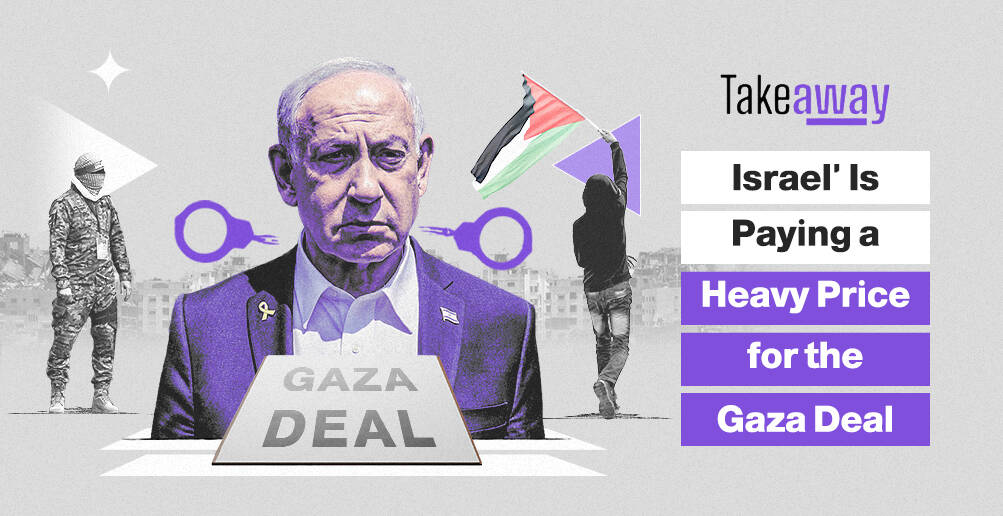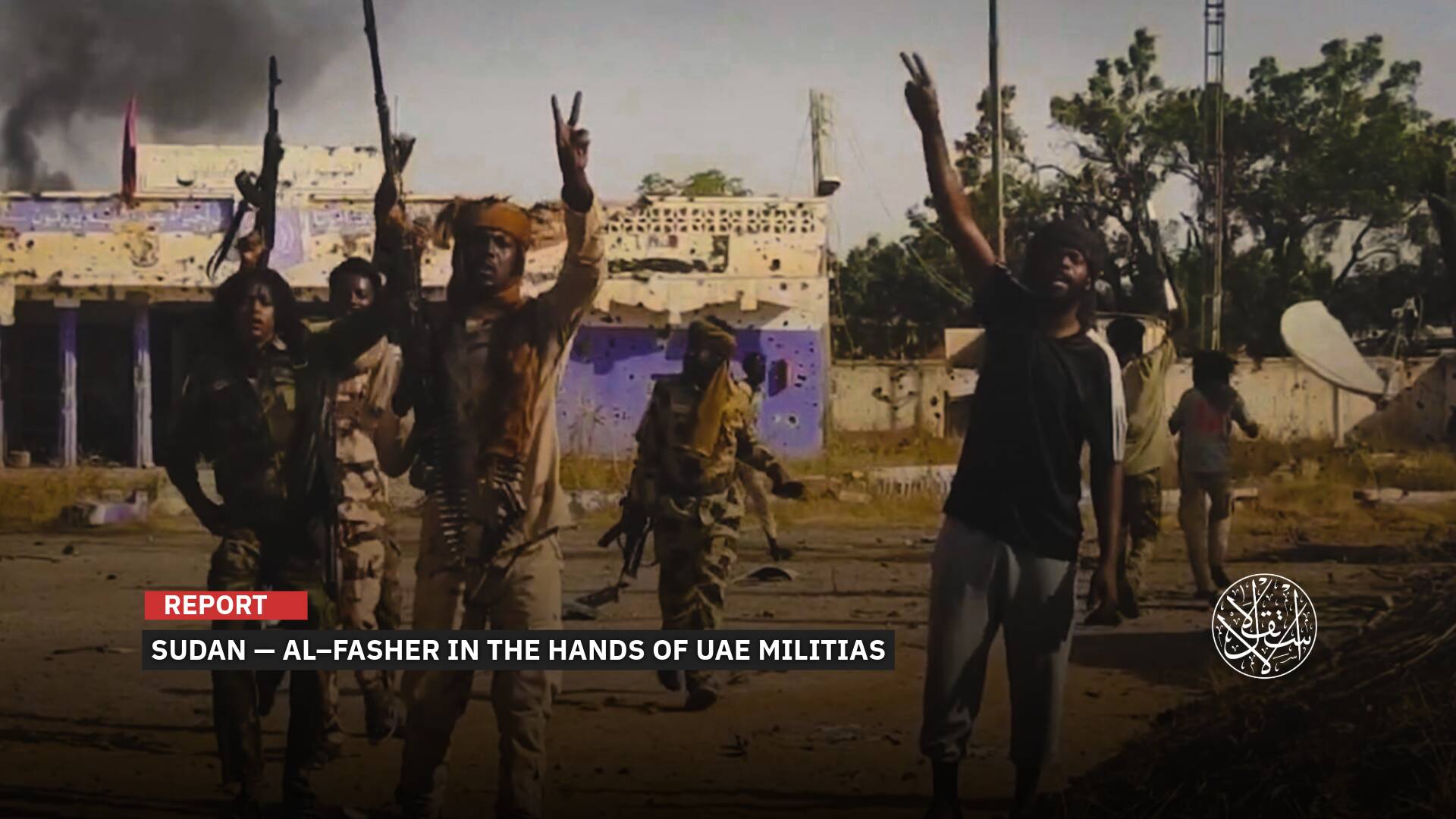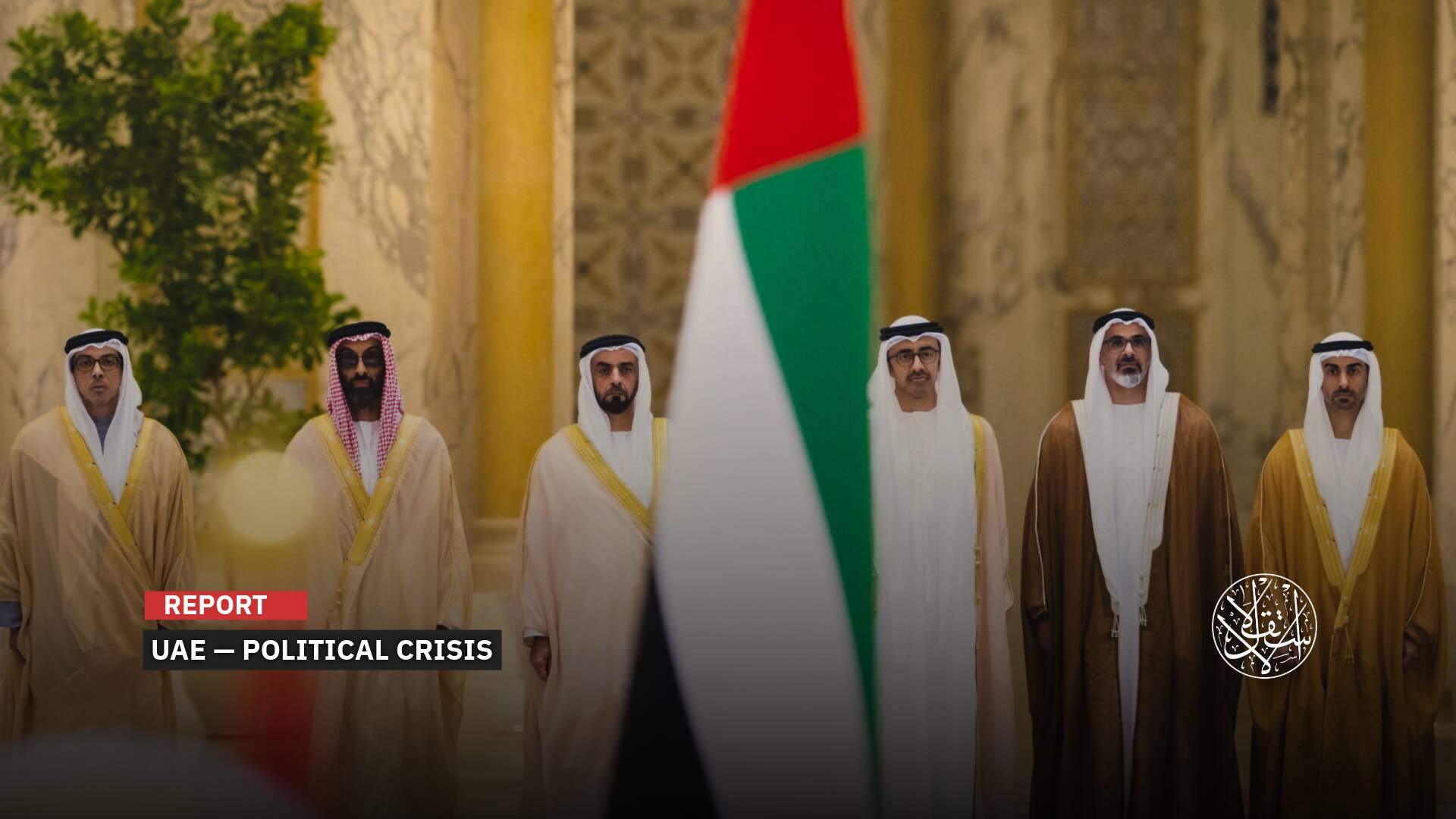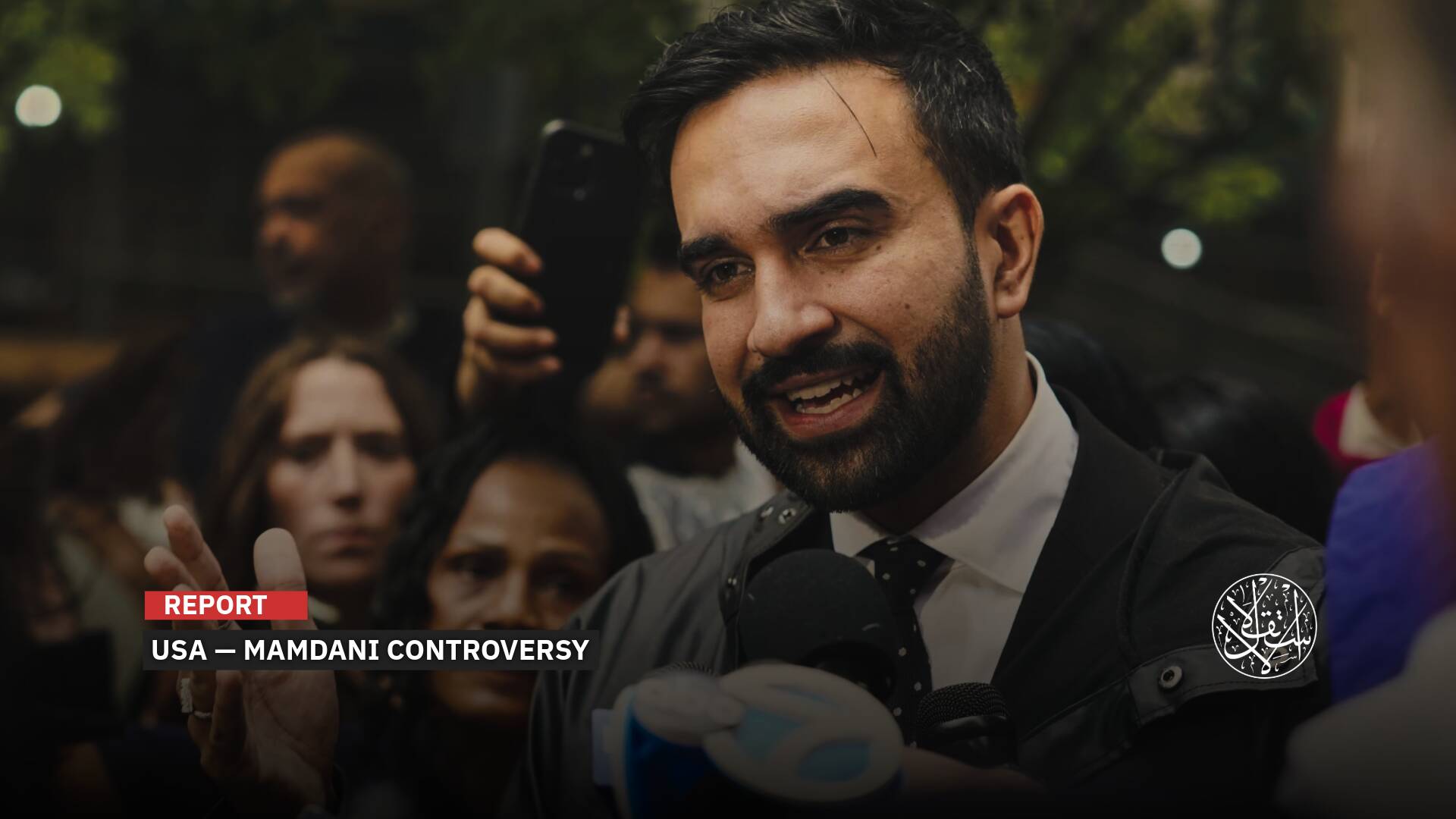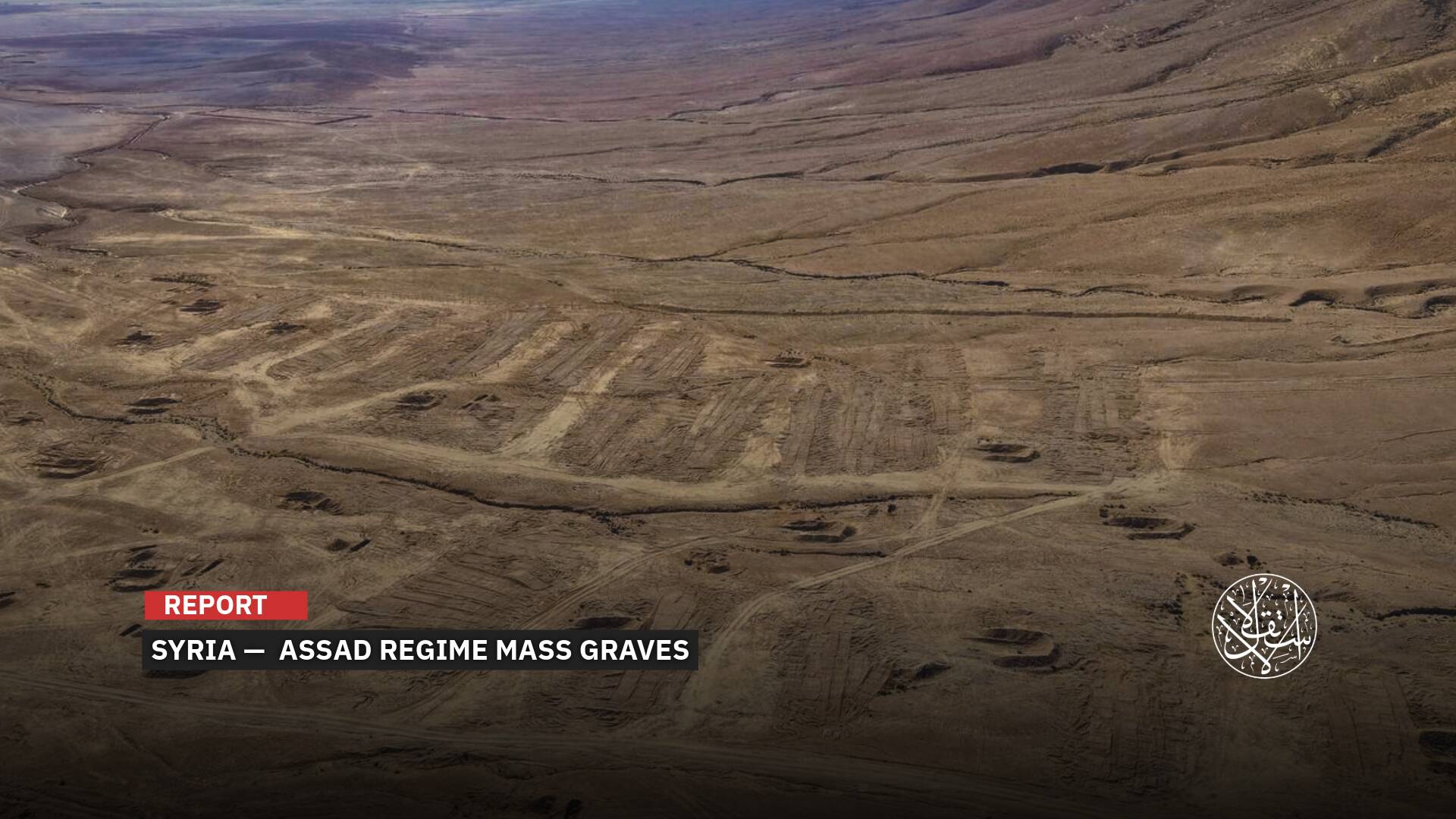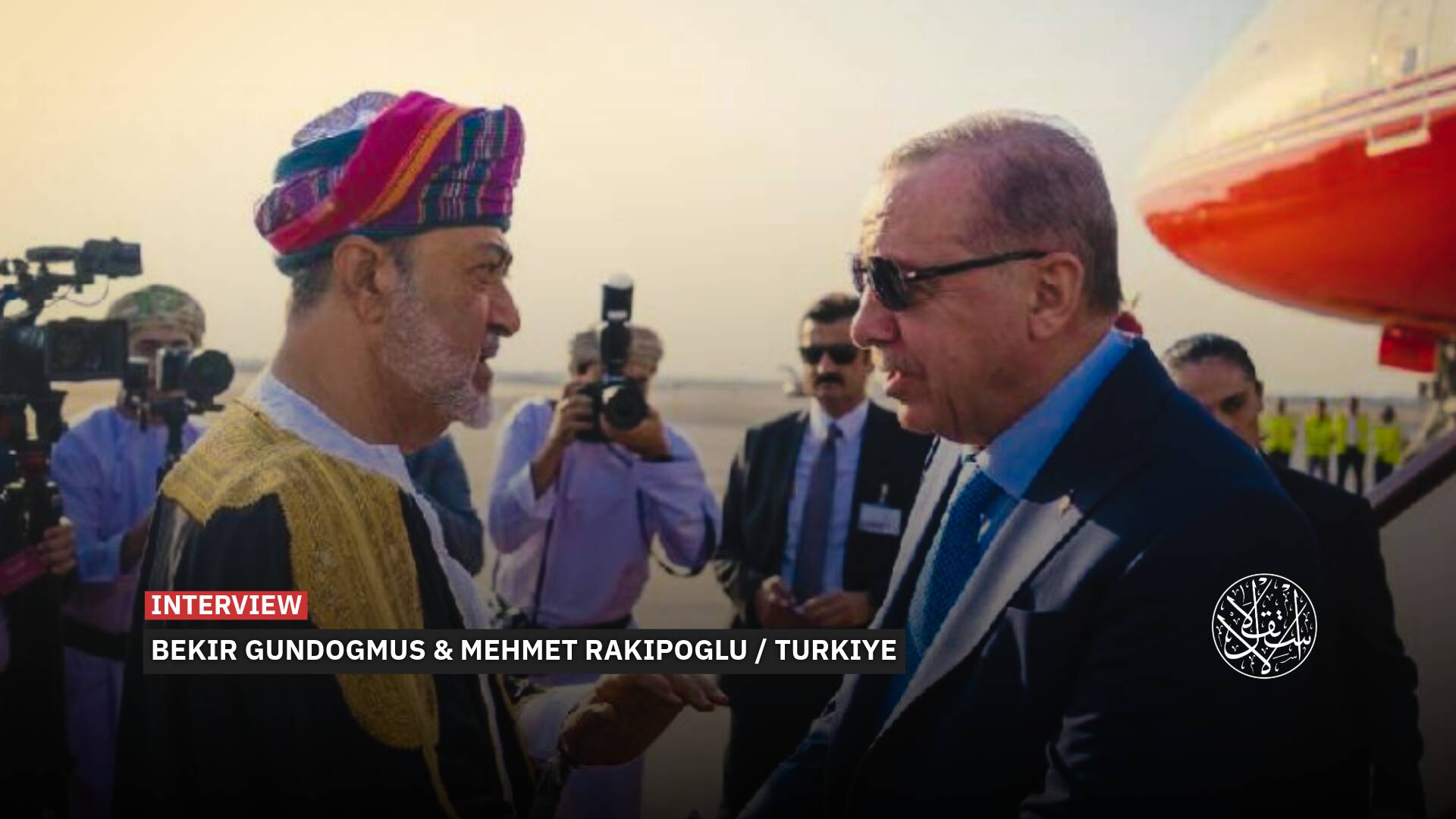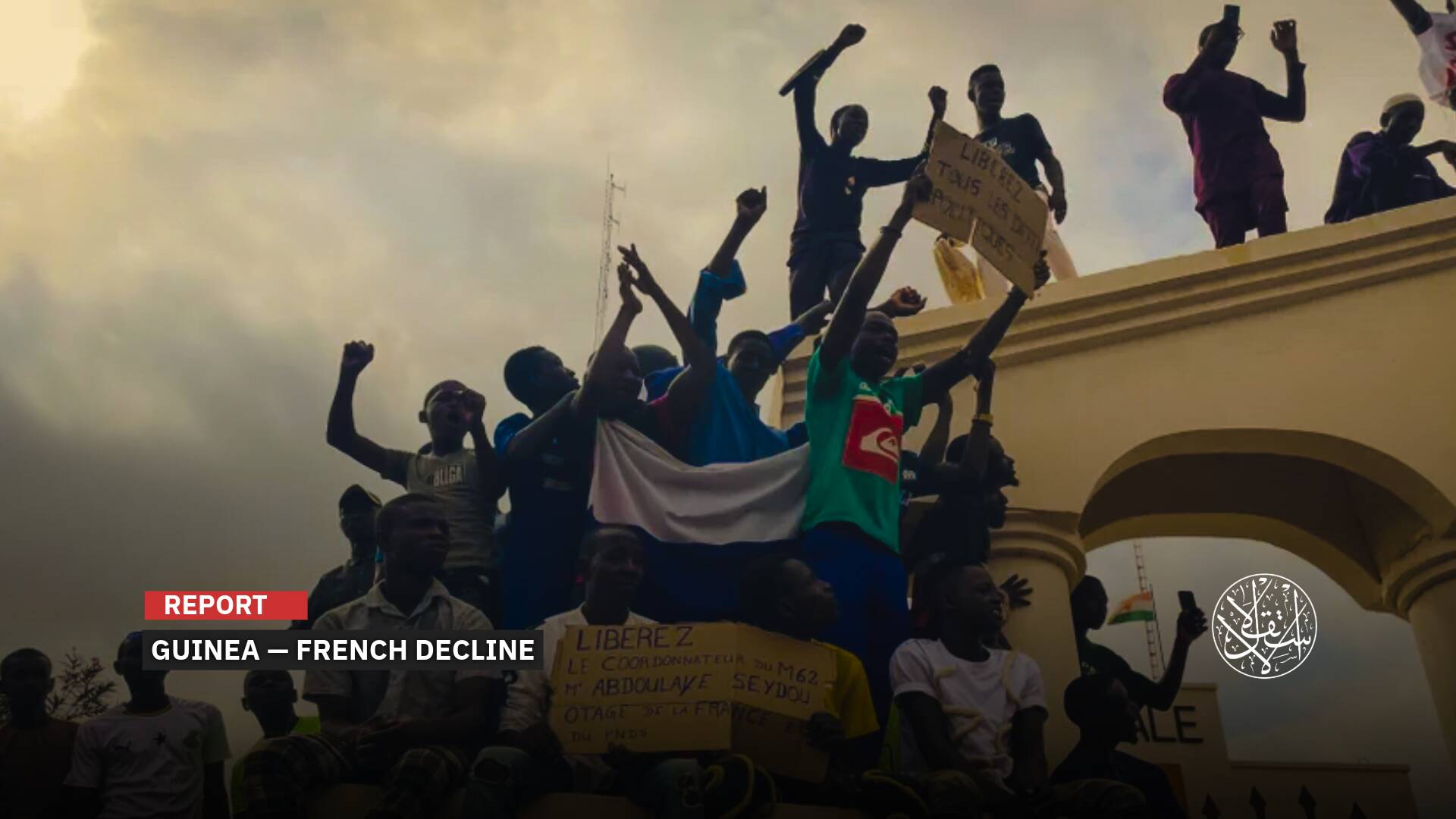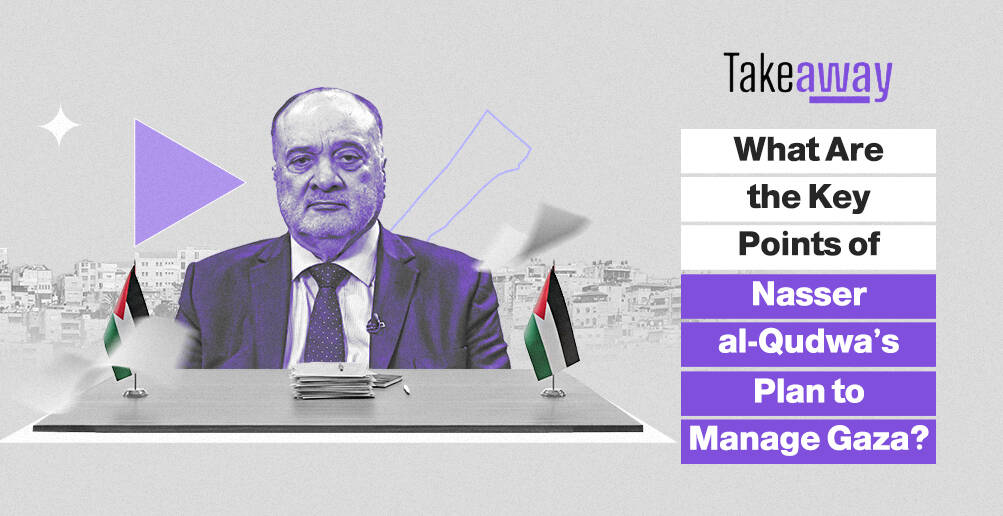Occupation and Division: How Israeli Maps Exposed Dreams of Colonial Zionism

The Israeli Foreign Ministry published a map that includes Arab territories from Jordan, Palestine, Lebanon, and Syria.
In the heart of the Middle East engulfed by the flames of the Israeli war on Gaza, the Israeli Occupation state has drawn attention for attempting to “reshape” the region's political landscape.
As part of this effort, “Israel” has been promoting fake maps on social media platforms to legitimize its occupation of Arab territories or areas it aims to annex and control in the future.
These maps do not merely reflect the political ambitions of Prime Minister Benjamin Netanyahu’s far-right government. They also embody a long-standing Israeli colonial vision, posing a direct threat to Arab capitals and their national identities.
‘Kingdom of Israel’ Map
On January 6, 2025, the Israeli Foreign Ministry published a map on its Arabic-language account on X (formerly Twitter), which included Arab territories from Jordan, Palestine, Lebanon, and Syria.
The post was accompanied by the caption: “Did you know that the Kingdom of Israel existed 3,000 years ago?”
The post quickly drew condemnation from the Palestinian presidency, the Palestinian Resistance Movement (Hamas), and Arab countries such as Jordan, Saudi Arabia, Egypt, and Qatar, who rejected what they described as an attempt to promote the concept of “historical Israel.”
Palestinian presidential spokesperson Nabil Abu Rudeineh criticized the Israeli government for using official platforms to post maps that include Palestinian and Arab lands, accompanied by inflammatory rhetoric advocating for the annexation of the West Bank and the establishment of settlements in Gaza. He called these actions unacceptable and reprehensible.
Jordan’s government also strongly condemned the publication of the map. Foreign Ministry spokesperson Sufyan Qudah stated that such claims would not undermine the kingdom’s sovereignty or the Palestinian people's right to establish an independent state along the 1967 borders.
Saudi Arabia’s Foreign Ministry issued a statement denouncing the Israeli claims about the “Kingdom of Israel” as baseless allegations, describing the map as propaganda aimed at advancing the Israeli Occupation’s agenda.
Similarly, Qatar released a statement condemning the map as a blatant violation of international legitimacy and international law.
These developments highlight growing regional tensions over the Israeli Occupation’s portrayal of territorial boundaries and its broader “ambitions” in the Middle East.

Dividing Syria
Recent discussions in Israeli media have reignited debates over colonial and expansionist narratives. On December 30, 2024, the Hebrew daily Yedioth Ahronoth published an article by writer Rami Simani advocating for the establishment of an independent Kurdish state and the division of Syria into autonomous regions. The article argued that such measures would curb Turkish expansion in the Middle East and bolster Israeli interests in the region.
In his article, Simani described Syria as “an artificial state that has disintegrated and never had a legitimate right to exist.” He further claimed that “Syria is neither an Arab state nor a nation-state for anyone. It is precisely what was decided at the San Remo Conference in 1920, which discussed the division of the Ottoman Empire after the victory of the major powers.”
Simani elaborated on his vision for Syria’s future, stating, “There is no justification for creating a unified state in Syria. The region was originally intended to consist of five cantons based on the ethnic and sectarian groups residing there: the Druze, Alawites, Kurds, and two Sunni factions.”
He argued that Syria’s creation as a single entity was a result of French pressure, paralleling Lebanon’s establishment as an “artificial state for Christians.” According to Simani, Lebanon’s Christians have since lost control of their “artificial state,” leaving its future uncertain.
Simani also drew parallels between Syrian leaders and figures like Yahya Sinwar, citing what he described as strategic image changes. “Abu Mohammad al-Jolani [Ahmed al-Sharaa] transforms his appearance constantly, from jihadist attire to tactical combat gear, and now to a tailored business suit. These transitions are calculated moves to mislead Israeli intelligence,” he claimed.
“Al-Jolani now seeks calm primarily to pacify his revolution partners, which explains his seemingly conciliatory remarks toward Israel and the rest of the world.”
Turkiye in the Target Bank
Rami Simani spoke candidly about what he called “Israel's plan,” stating, “There is a real opportunity for Israel to shape the surrounding region for generations to come. A strategy is needed to overthrow the Iranian regime, as destroying its nuclear capabilities won’t help as long as the regime continues to seek our destruction.”
“However, the greatest threat to Israel after Iran falls is Sultan Erdogan, who is on his way to recreating the Ottoman Empire and speaks of occupying Israel. That’s why Erdogan supports a unified Syria; in order to occupy the Middle East, he needs calm along his borders.”
“Israel’s interest is the exact opposite. Israel can and should make Syria disappear. Instead, five cantons, which already exist, should be established, and Israel must deepen its control within Syria, particularly in the Druze canton, which seeks to connect with us—not through annexation, but through autonomy, under the protection of Israel,” he added.
“The crown jewel is the open military and political support for the Kurdish minority. Imagine a Kurdish state with tens of millions of people, sitting on Erdogan's doorstep along his eastern borders.”
“Israel must abandon its policy of hiding its relations with the Kurds. The Kurds are long-time friends of Israel, with deep historical ties to us. Encouraging the establishment of a canton, autonomous region, or a Kurdish state along Turkiye's borders would pose significant problems for Erdogan, forcing him to explain his opposition to the world, and it would shake his domestic support in Turkiye,” according to Simani.
“This will weaken Turkiye’s fragile economy, and may ultimately lead to the end of Erdogan’s rule in the country, which would bring relief to all NATO countries, and before them, Israel,” he concluded.
‘Blood Borders’
When discussing Zionist plans for the future of the Middle East, one can reference a map published in the U.S. Armed Forces Journal under the title “Blood Borders: How a better Middle East would look.”
The map, published in June 2006 by U.S. Colonel Ralph Peters, was notable for its proposal to divide the Arab world along ethnic (ideological) lines.

The plan revealed disturbing details about a potential partition of states, carefully drawn by U.S. military circles.
Colonel (Ret.) Ralph Peters, a theorist of U.S. military strategy, presented a detailed drawing of Middle Eastern borders based on “ethnic, sectarian, and tribal” foundations.
He mentioned groups like the Kurds, Baloch, Arabs, Shiites, Christians, Baha'ís, Ismailis, Naqshbandis, and others.
Peters’ map aimed to create seven new states from the ruins of existing ones: “Greater Kurdistan,” “Arab Shiite,” “Greater Syria,” “Greater Lebanon,” “Greater Jordan,” “Free Balochistan,” and a “Persian Nationalist” state.
According to Peters, the “Arab Shiite” state would center on southern Iraq, including Ahvaz or Arabistan, home to Shiite Arabs (southwest Iran), as well as the eastern part of Saudi Arabia, where the Shiite minority resides.
The states of “Greater Syria” and “Greater Lebanon” would emerge through the division of Iraq into three parts: a Kurdish region in the north, a Shiite one in the south, and a Sunni one in the center.
The Sunni portion would be attached to Syria, while a part of Syria would be annexed to Greater Lebanon to revive the historic “Phoenicia.”
As for “Greater Jordan,” it is proposed to include parts of northwestern Saudi Arabia, creating a state for the “Palestinian diaspora,” while “Israel,” as recommended by Peters, would remain within the pre-1967 borders.
Peters also suggested carving parts of Iran to form “Greater Kurdistan,” the “Arab Shiite” state, and “Free Balochistan,” spanning Afghanistan and Pakistan.
In exchange, a part of Afghanistan would be allocated to establish a “Persian Nationalist” state, replacing the Iranian Republic.
Saudi Arabia would be also divided into five sections: the first, the eastern coastal region (home to the Shiite minority), would join the “Arab Shiite” state; the second, covering the northwestern and eastern parts of the kingdom, would be integrated into Jordan.
The third section would encompass Mecca and Medina, forming a religious state ruled by a religious council of various sects and denominations, akin to the Vatican. The fourth section, in the south, would merge part of southern Saudi Arabia with Yemen, while the remaining area would form a non-religious political state ruled by the Saudi royal family.
It seems that over a century after the 1916 Sykes-Picot Agreement, which was signed between colonial powers, discussions about the division of Arab states continue to echo in Western research, military, and intelligence circles—especially with the West's ongoing efforts to secure Israeli Occupation’s existence both strategically and geographically.
Sources
- How a better Middle East would look
- Israel vs. Turkey: The Intensifying Middle-East Power Struggle
- Palestinian-Jordanian condemnation of Tel Aviv's publication of alleged maps of "historical Israel" [Arabic]
- Map of the "Kingdom of Israel" -- Official Israeli Comment and Arab Condemnations [Arabic]
- Peters’ “Blood borders” map (Analysis) [Arabic]
- Israeli media talks about dividing Syria into cantons [Arabic]
- The real intentions of the Zionists [Arabic]
- Report: Israel seeks to divide Syria into 5 cantons [Arabic]


